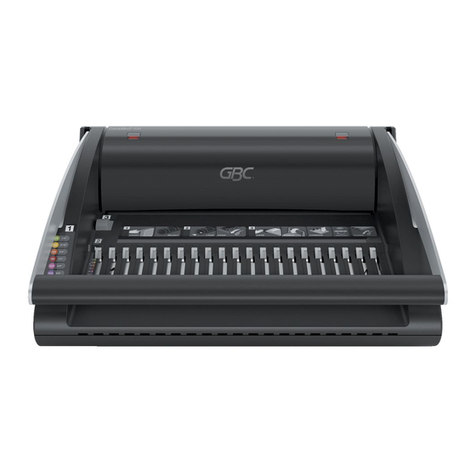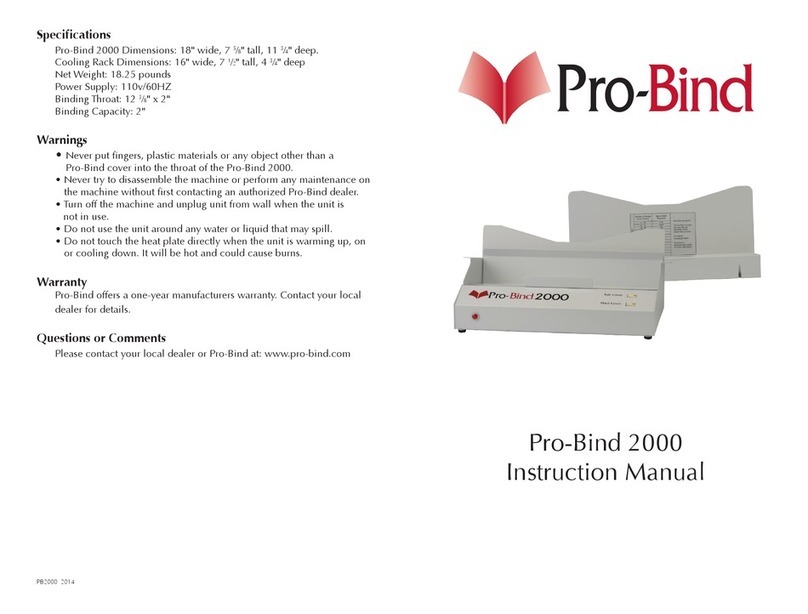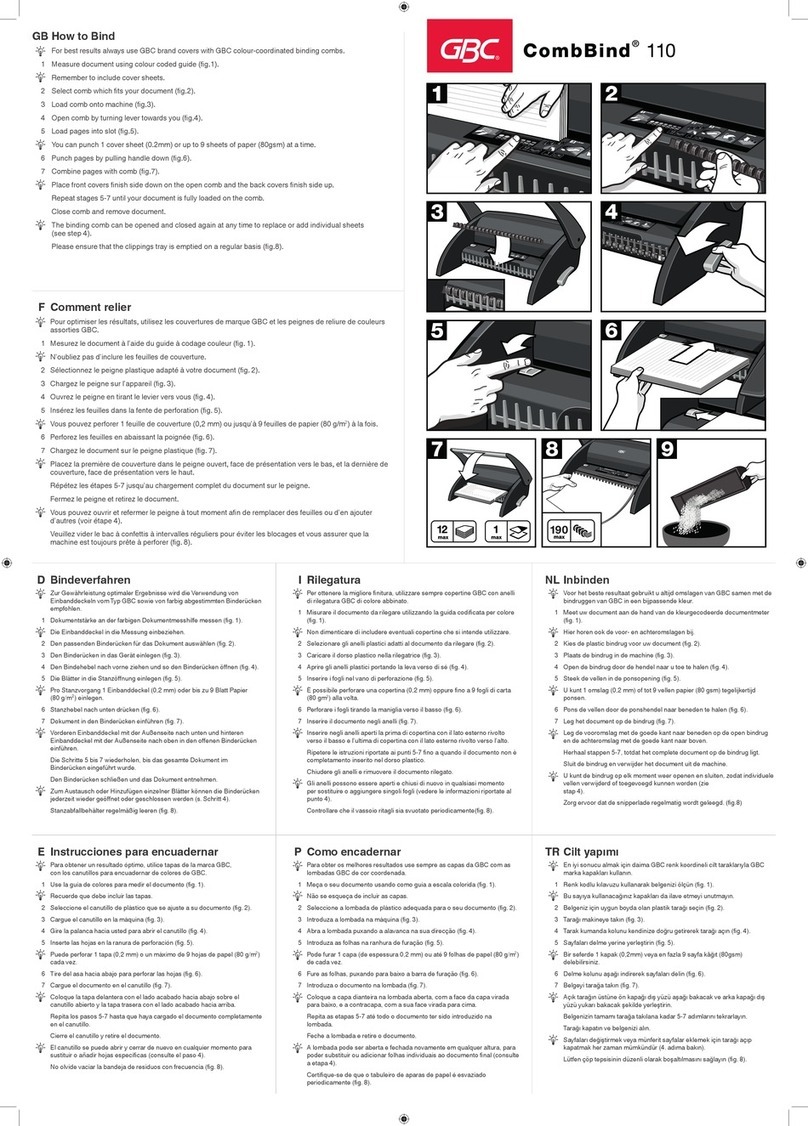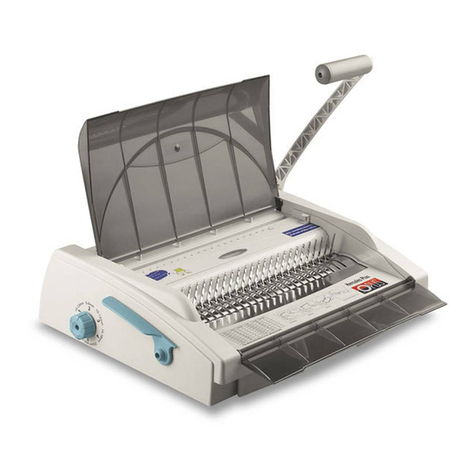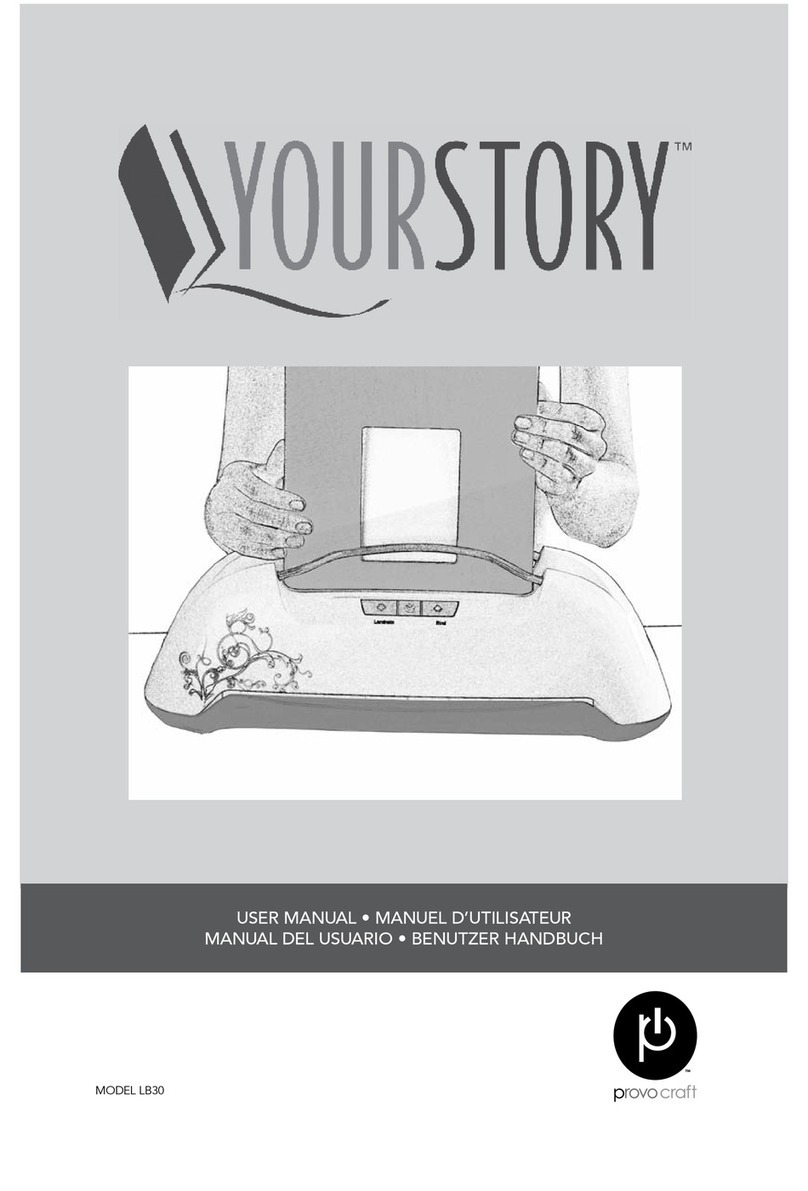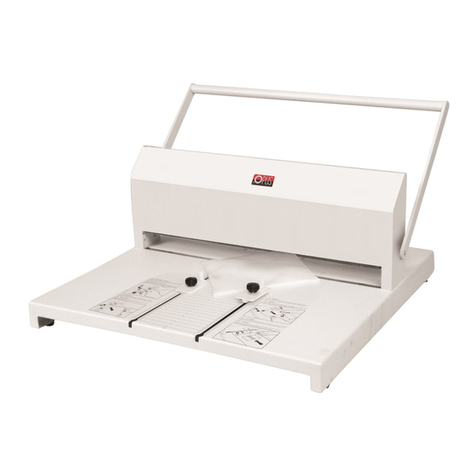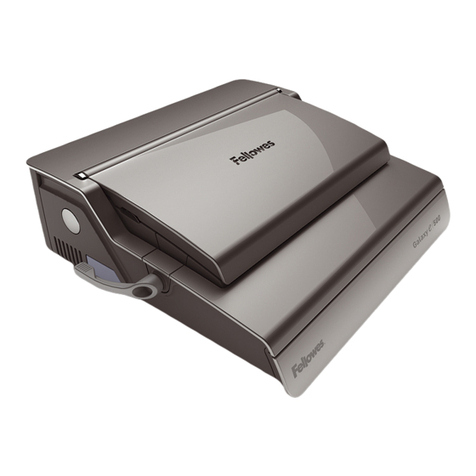FORMTECH 300XQ Service manual

-
....,
I
.....
I
I
_,
l
\.
','U I'•8 1
b'}
" ' '
Formech
forming
to
perfection
1
ifil1
· i
CJ1
I
c,H
.
Installation,
Operating
and
Service
Manual

User Manual
Contents
Safety ................
..
.
...
........................................................
..
................
...
.
...
.............................................
..
3
Introduction and initial assembly ........................................................................
..
..............................
..
.6
Optional extras........
..
........
..
........................................................
....
........................................................7
General Arrangement .......................
..
.............................
..
...................................
..
...........
..
..
..............
..
.8
Operating procedures ..................................
..
...............
...
.
..
.
..
............
..
....................
...
.......................... 10
BASIC
OPERATION
..
...............
..
.........
...
.
...
..
..
...
...........................................
..
...................................... 11
F.A.Q.
..
........................................................................................
..
..
.........
..
..
.......
..
..........
..
..................... 13
Warranty..........................................
...
..........................
..
.........
...
..........................
......
...
..
.....
..
..
..
..........
14
Service I Repair .......................
...
..................
...
...................
..
.................
...
..
........................................... 15
A.
REPLACING
SEALS
..........
..
.................
...
.........
...
.......................................................
..
....................15
B.
REPLACING
A
HEATING
ELEMENT
..
...
.
...
.............................
..
...
........
...
......
..
..................
...
...........
...
16
C.
ELECTRICAL
TROUBLESHOOTING
....
..
............................................................
..
...........................
...
17
D.
VACUUM/PRESSURE
TROUBLESHOOTING
...........
...
....................................
..
.............................
..
19
Schematics
......
.
......
................
...
........
...
.......
..
............
...
.
...
..
.........
..
......................................................20
Page
2
\
L
r
L
-

,....
-
-
-
Safety
Thank you
for
choosing Formech.
Please
read and follow the below safety instructions before attempting
to
install
or
operate your machine.
A
...
Only
use
the machine
for
vacuum forming plastic.
It
is
not intended
for
any other purpose.
•
Read
and understand all
of
this user manual.
• This
is
a 'single person operating' machine.
•
Do
not operate the machine until you have been trained
and
are fully conversant with
it
.
II"
Users
of
this machine should complete regular competence tests.
•
Check
your supply voltage
and
frequency. Make sure
it
is
compatible with your machine. Your
machine's electrical specification
is
on the plate on
the
Left hand side.
•
You
must ensure
that
the machine
is
properly earthed
and
fused.
II"
Ifyour machine
is
not
equipped with a moulded mains connector then note
that
:
The
earth wire
is
GREEN
with
a
YELLOW
stripe.
===
The
live wire
is
BROWN
The
neutral wire
is
BLUE
...
Only suitably qualified personnel should make electrical connections
...
Turn
off
the machine and disconnect the power supply when the machine
is
not
in
use
.
.,..
The heater
and
pump on this model are
not
intended
to
be
left running indefinitely.
...
This
machine
is
fitted with a dry running vacuum pump.
Do
not
lubricate.
Do
not
allow any liquid
to
enterthe vacuum system. Ensure
that
moulds are properly sealed
to
prevent ingress
of
dust into
the
vacuum circuit. Severe damage may
be
caused
if
the above
is
not
observed.
...
Note the safety warning labels situated on
the
front
and rear panels. Never remove any warning
labels from the machine.
...
Never remove any panels unless
the
electrical supply
has
been isolated.
.,..
Ensure
that
the area surrounding the machine
is
clean and frequently cleared
of
finished product and
any scrap.
.,..
Daily repetitive
use
of
this or any other machine may lead
to
a)
fatigue and
loss
of
concentration
b)
possible strains. Operators should
be
trained in
the
use
of
correct liftingtechniques in order
to
minimise these effects.
Page
3

Safety
Hazards specific
to
this machine.
It
is
vital
that
any person using this machine and
the
person(s) responsible
for
the
health & safety is made fully
aware
of
the
potential hazards
that
could arise
from
the
use and misuse.
1. Electric shock.
This machine
uses
Voltages up
to
240Vac.
NEVER
ATIEMPT
ANY
REPAIR
UNLESS
THE
ELECTRICAL
SUPPLY
DISCONNECTED.
ONLY
SWITCH
ON
WHEN
ALL
COVERS
HAVE
BEEN
REPLACED.
ONLY
A
QUALIFIED
ELECTRICAL
TECHNICIAN
MAY
WORK
ON
ANY
PARTS
CARRYING
MAINS
VOLTAGE
AND
SHOULD
BE
RESPONSIBLE
FOR
ENSURING
THATTHE MACHINE
IS
IN
A
SAFE
CONDITION
BEFORE
ALLOWING
SERVICES
TO
BE
RESTORED.
A 2. Burning.
Parts
of
this machine reach temperatures in excess
of
300°C.
NOTE
THE
'
HOT
SURFACES'
SAFETY
LABELLING
ON
THE
HEATER
& H
EATER
GUARD
.
SPECIAL
PRECAUTIONS
MUST
BE
TAKEN
TO
ENSURE
THAT
ONLY
THE
MACHI
NE
OPERATOR
IS
IN
THE
OPERATING
AREA
DURING
USE.
USE
PERSONAL
PROTECTIVE
EQUIPMENT
SUCH
AS
GLOVES
WHEN
TESTING
THE
HEATED
PLAST
IC,
HANDLING
HOT
VACUUM
FORMED
PARTS,
MANUALLY
ASSISTING
THE
FORMING
PROCESSS
AND
TOUCHING
HOT
SURFACES
.
INFRARED
RADIATION
IS
EMITIED
BY
THE
QUARTZ
HEATERS
,
ENSURE
THAT
ANY
EXPOSURE
TO
T
HIS
TYPE
OF
RADIATION
IS
SHORT
OR
COMPLETELY
AVOIDED
.
WAIT UNTIL
THE
MACHINE
HAS
COOLED
DOWN
BEFORE
SERVICE
WORK
COMMENCES
.
3. Toxic Fume Inhalation.
When plastic sheet
is
heated fumes will be given
off
.
ENSURE
THATTHE MACHINE
IS
POSITIONED
IN
AN
ADEQUATELY
VENTILATED
PLACE.
IT
IS
THE
RESPONSIBILITY
OF
THE
OWNER
OR
DESIGNATED
RESPONSIBLE
PERSON
FOR
HEALTH
AND
SAFETY
TO
ASSESS
THE
RISKS
ASSOCIATED
WITH
ANY
DANGEROUS
FUMES
GIVEN
OFF
AND
TO
DETERMINE
ANY
NECESSARY
PRECAUTIONS
REQUIRED
SUCH
AS
FUME
EXTRACTION
PRIOR
TO
USE
.
4.
Injury
from
Trapping.
CARE
IS
REQUIRED
WHEN
OPERATING
THE
CLAMPING
FRAME
TO
ENSURE
THAT
FINGERS
OR
HANDS
ARE
NOT
TRAPPED
.
KEEP
HANDS
CLEAR
OF
THE
HEATER
RAILS
WHEN
PULLING
THE
HEATER
FORWARDS
.
5. Fire.
RISK
OF
FIRE
AS
A
RESULT
OF
HEAT
AND
PLASTICS
PRESENTS
AN
EMERGENCY
SITUATION.
ENSURE
FIRE
SAFETY
TRAINING
IS
PERFORMED
&
CONTROLLED
.
IT
IS
ESSENTIAL
TO
HAVE
FIREFIGHTING
EQUIPMENT AVAILABLE
AT
OR
NEAR
THE
MACHINE.
USE
DRY
POWDER
(BLUE)
OR
CARBON
DIOXIDE
(BLACK)
FIRE
EXTINGUISHERS.
Page
4
-

-
-
-
Safety
6. Prohibited Uses
DO
NOT
USE
THIS
MACHINE
FOR
ANY
PURPOSES
OTHER
THAN
THE
VACUUM
FORMING
AND
BLOW
MOULDING
OF
PLASTICS
SHEET
.
DO
NOT
USE
THE
HEATER
TO
APPLY
HEAT
TO
ANY
MATERIAL
OTHER
THAN
PLASTIC
SHEET
AS
PART
OF
THE
VACUUM
FORMING
PROCESS
SUCH
AS
:
FOOD
PRODUCTS,
ALL
TYPES
OF
PARTICLES,
POWDER,
DUST,
ALL
TYPES
OF
LIQUID, WOOD,
PAPER,
METALS
AND
ANY
FORMS
OF
COMBUSTABLE
MATERIALS.
DO
NOT
USE
THE
TABLE
MECHANISM
TO
CLAMP
,
COMPRESS,
FOLD
OR
APPLY
FORCE
TO
ANY
ITEM
UNDER
ANY
CIRCUMSTANCES.
DO
NOT
USE
THE
CLAMPING
FRAME
TO
CLAMP
COMPRESS,
FOLD
OR
APPLY
FORCE
TO
ANY
ITEM
OTHER
THAN
THE
CLAMPING
OF
SHEET
PLASTICS
AS
PART
OF
THE
VACUUM
FORMING
PROCESS
.
DO
NOT
USE
THE
TOP
OF
THE
HEATER
OR
TOP
OF
THE
HEATER
GUARD
TO
STACK
PLASTICS
OR
-
OTHER
MATERIALS
.
DO
NOT
USE
THE
MACHINE
TO
STACK
OR
LEAN
ITEMS
AG
INST
THE
SIDES
.
DO
NOT
USE
ANY
OTHER
PART
OF
THE
HEATER
TO
MOVE
THE
HEATER
FORWARDS
AND
BACKWARDS
OTHER
THAN
THE
HEATER
HANDLE
.
-
DO
NOT
USE
OR
MODIFY
THE
ELECTRICAL
POWER
IN
THE
INTERNAL
WIRING
TO
SUPPLY
ANY
OTHER
DEVICE
OR
TO
APPLY
MODIFICATIONS
TO
THE
MACHINE
OR
ITS
FUNCTIONS.
-
-
-
THIS
IS
NOT
AN
EXHAUSTIVE
LIST
OF
THE
POSSIBLE
MISSUSE
OF
THIS
MACHINERY.
THE
USE
OF
THIS
MACHINE MUST
BE
ASSESSED,
MONITORED
AND
CONTROLLED
BY
THE
PERSON
RESPONSIBLE
FOR
THE
HEALTH
AND
SAFTEY
IN
THE
ORGANISATION
THAT
OWNS
AND
OPERATES
THIS
MACHINE.
Transportation / Positioning
The
300XQ
will
be
supplied strapped to a Pallet or
in
a crate.
The
machine
may
unpacked
and
placed
on
a
bench,
table or
300XQ
trolley.
Ensure
thatthe structure,
size
and
load
bearing
capacity
of
the
bench
or table
is
sufficient for the
machine
weight. Aminimum
of
2
persons
are
required to liftthe
machine.
In
the
case
of
the
300XQ
trolley,
ensure
that the 2
machine
retaining
screws
are
fitted to the
unde
r
side
ofthe trolley I Machine.
Noise emissions
Noise emissions on
the
Formech 300XQ are
less
than 70dB(A).
Machine storage
The Formech 300XQ must
be
stored in a
dry
environment.
Page
5

lntrodudion and initial assembly
The
Formech 300XQ
is
a highly versatile, manually operated Vacuum Forming Machine
that
will produce high
definition mouldings in up
to
6mm thick material.
It
is
intended
for
use
only
for
the Vacuum forming
of
plastics
components and
for
the blow moulding
of
heated plastics.
Your Formech machine
is
supplied with
lx
Electrical cable
lx
Installation/Operations/Repair
Manual
lx
Table lever (a)
(•)The 300XQ machine
is
fully assembled except
for
the table lever.
lx
EC
Certificate
of
conformity
lx
Table mesh
ENSURE
THAT
THE
TABLE
LEVER
IS
TIGHTLY
SCREWED
INTO
THE
CRANK
MECHANISM
ON
THE
RIGHT
HANDSIDE
OF
THE
MACHINE.
IF
OPERATED
WITH
THE
LEVER
LOOSENED
YOU
MAY
DAMAGE
THE
CRANK
OR
THE
HANDLE.
--
Page
6
._
......
_
..

-
-
-
-
-
Optional
extras
The following items
can
be purchased
for
your 300XQ vacuum forming machine
1. Machine trolley with castors
2.
Reducing windows 3. Blow mould
window
4.
Service kit
1. The Formech machine trolley allows you
to
easily move your 300XQ machine. The 2 locking castors assure
the trolley remains in position all the time. Underneath there
is
also
space
to
store plastic material
and
moulds.
2.
Formech have available a standard
sizes
of
reducing plates.
This
reducing plate allows
the
use
of
plastic
size
254mm x 228mm. Formech
can
also produce special
size
reducing windows. For more information please
contact our
sales
department.
3.
You
can
use
your vacuum forming machine
to
do blow moulding by fitting a special circular reducing
window
to
your machine. The maximum diameter you will get on the 300XQ
is
300mm.
For
more information
please contact our
sales
department.
4.
It
is
unlikely
that
you will need
to
service
or
repair your machine
for
many years provided you
follow
the
maintenance information contained in this manual; howeverthe table and clamp
seals
, which are considered
to
be
consumable items, will need
to
be
replaced depending on the
usage
of
the machine. Therefore this kit
contains
the
essential consumables
(seals
and
pump filter)
to
ensure agood performance
of
your machine
year on year.
Page
7

General Arrangement
ELECTRICAL
SPEC
IF
IC
ATIO
N
Standard Voltage: 220-240
Standard fr
eq
uency: 50/60!-lz
Standard Max Power: 2.3Kw
1.
Spech:a
tion plate
2. Power inlet receptade
3. Power switch
00
/
0FF
4. Clampframe
5. Matera! damps
6. Heater
Bo
x
7. Vacuum\pressurevalve
8. Table
le
v
a-
9. Control
pe11el
10. Pump switch
ON
I O
FF
1
1.
Ar
output
MECHANICA
L
SPEO
RCATI
ON
DO
NOT
CONNECT
AIR
SUPPLY
HERE
Standard material size 450mm x300mm (18'' x 12'')
Maximumforming area 430mm x 280mm (
16
.9" x11.02'
')
Maximumdepth
cl
ctaw 185
mm
(6 7/8'')
Overall
wdth
640mm (25 1/4
")
Overall height 530mm (
21
'
')
Overall length 1
OOOmm
(
39
31
8'
')
W
ei
ght 65kg (1
451bs)
1. Specification Plate. This states
the
essential machine data &
CE
marking.
2.
Power Inlet receptacle. The machine
is
supplied complete with a power cable
that
pl
ugs
into
this receptacle
and then into a suitable power socket.
If
your
machine
is
a special voltage
or
frequency then
it
may be
supplied
with
a lead
not
terminated
into
a mains plug.
See
Safety section at
the
beginning
of
this manual.
Note
the
safety labelling.
3. Power Switch ON/OFF. This
is
the main switch. When in
the
OFF
position power
is
cut
to
all functions.
Before commencing any repair work always remove
the
mains lead
from
the
Power Inlet Receptacle.
4.
Clamp Frame.
This
holds
the
plastic material in position during
the
fo
rming and release processes.
5.
Material
Clamps. These clamps fix
the
Clamp Frame firmly down. After placing
the
plastic under
the
clamp
frame
the
material clamps are adjusted bytightening
or
loosening
the
orange nutlets.
The
levers are pulled up
until they are fully over-centre. Adjustment may only be carried
out
while
not
under pressure. The rear
of
the
clamp frame
is
selfadjusting.
6. Heater Box. This carries
the
heating elements and
is
drawn forward by pulling
the
centrally mounted
handle.
7. Vacuum/Pressure Valve. When
the
vacuum pump
is
running
th
is
va
l
ve
switches between removing air
from between the mould and moulding duringforming (vacuum) and introducing air between
the
mould and
moulding
for
finished part release (pressure).
Page
8
-
-

-
-
-
-
-
-
General Arrangement
<cont.)
8. Table Lever. When pulled towards you the table will rise
to
the upper
limit
. A
further
application
of
pressure will lock the table in this position. During forming
the
table complete
with
mould
is
lifted into the
hot
plastic and locked in place
to
ensure a good vacuum
seal.
At the end
of
the cycle the table
is
returned
to
the
lower position by pushing the handle back and away.
NOTE
: A mechanical interlock designed
to
prevent a mould being raised into the heating elements stops the
table being raised unless the heater box
is
fully back.
9. Control Panel.
See
below control panel layout.
10. Vacuum Pump ON/OFF switch.
This
turns the vacuum pump on and
off
. The vacuum pump evacuates the
air between
the
plastic sheet and the mould. It also provides pressure
to
release the finished moulding
from
the
mould.
11.
Air
pressure outlet. When the vacuum pump
is
running, the pressure
is
diverted
to
this outlet. This
can
be
used
to
supply or run other equipment when not being
used
for
vacuum forming. Do
not
block this
outlet
or
attempt
to
connect
air
supply. This machine
DOES
NOT require air supply.
- 4''
,
,
~
l
llll
l0
• •
_
...
0
15
12. Heater Zone layout
15
.
Hea
ter timer
13. Heaterstandby level contr
ol
16. Vacuum Gauge
14. Zone powerlevel controls
12. Heater Zone layout. Pictogram showing the corresponding zone layout
of
the quartz heater zones.
13. Heater Standby Level (Power Saving Feature). The 300XQ
is
supplied with fast acting heating elements.
This means
that
when
the
heater
is
not
actually heating plastic
the
power
can
be
turned down.
As
the heater
is
moved
from
the rear position the elements begin
to
heat up
to
the set power level.
For this feature
to
work effectively the power level at rest
or
standby must be set
to
approx.
30%.
For
continuous usage the standby level may
be
set lower. For infrequent usage
it
may be required
for
the standby
level
to
be
set higher. For non-time critical
uses
the standby level
can
be
set at about
10%.
Although the
plastic may take a
few
extra seconds
to
heat, the overall power saving will
be
substantial
Safety
Notice
:
It
is
advisable
to
monitor
the
heating stage
by
making
frequent
observations.
Never leave
the
machine unattended when actively heating plastic.
14. Heater Zone Controls. The 300XQ heater
is
divided into 4 zones
as
shown by the diagram (12)
on
the
control panel. This
is
to
allow the user maximum flexibility especially when producing mouldings from difficult
moulds
or
difficult plastics.
It
is
usual
to
turn
the centre zone 1 down slightly because
it
gains extra heat from
the other zones surrounding it. The back zone 3 also tends
to
stay
hotter
than
the
front
zone 4 because the
rear
of
the machine
is
heated
by
the heater when
it
is
not heating plastic. A key feature
of
quartz heating
is
Page
9

the response time
for
changing
to
different power levels. The zone controllers are highly accurate and keep
the element power level
within
1%
of
the
requested setting. Beginners
to
vacuum forming will quickly become
accustomed
to
setting
the
zone controls
for
best results.
15. Digital
Timer
. When producing a quantity
of
mouldings using
the
same mould and plastic
the
heating
ti
me
will be nearly constant
for
each one. In this
case
the
timer
can
be used. Record
the
heating
time
for
the first
mouldingthen set
the
timer
(in seconds) using
the
UP/
DOWN
buttons
the
buttons. When
the
heater
is
pulled
forward
the
timer
counts down from
the
set time
and
sounds a buzzer when zero
is
reached. The heater is
then pushed back. The set
time
is
stored until
it
is
altered.
If
you don't
want
to
use the timer, set
the
time to
zero.
The
timer
has
built in safety features.
If
the
heater
is
forward
fo
r more than 2 minutes
after
the
timer
has
completed
the
set
time
the
heater will switch
to
the standby setting.
If
the
heater
is
not
returned
to
the
standby posi
tion
aftera
further
2 minutes then
the
heater will
turn
off
all power
to
the
heating elements.
16. Vacuum Gauge. This
is
situated on
the
top
RHS
of
the
front
panel and gives indication
of
the
vacuum level
achieved
at
the
table mould area during moulding. It
is
usual
to
expect approx 22"Hg I -750mbar
of
vacuum. If
such levels are
not
achieved check your mould I table configuration & clamp I plastic
seal
ing.
Reducing Windows
Reducing windows allow
the
use
of
smaller sheet material
for
smaller mouldings. Reducing windows all
ow
for
better
sheet utilisation.
To
fit
the
reducing wi
ndow
.
1. Lift
the
clamp frame.
2.
Place
the lower reducing
window
plate on to
the top
frame aperture
so
that
the corn
er
locating
screws are
al
igned.
3.
Place
the
top
reducing window plate on
the
underside
of
the
clamp frame. There are folded sections
on
the
front
and rear.
The
rear edge
has
the larger return and wraps completely around
the
clamp
frame bar.The
front
fold
is
smaller and returns against
the
front
clamp frame bar. The fixing bolt
is
fitted
through
the
clamp frame bar and reducing plate and secured using
the
fixing n
ut
..
See
diagram
below
of
side view
of
the
top
plate
fitting
.
Rea
r
of
cl
amp
f
rame
Fr
on
t
Si
ide
v
tew
4.
Close
the clamp frame.
Check
alignment
oftop
and
bottom
plate. Fit
the
required plastic
mater
i
al
on
the
sealed lower reducing plate. The material toggle clamps will need adjusting so
that
the
clamp
frame
can
be
locked
to
achieve
the
necessary clamping pressur
e.
Page
10
-
-
-
-
-
-
-

......
-
-
Operating procedures
BASIC
OPERATION
Turn the power switch
to
ON.
The
Set
the zone controls
as
below:
digital
timer
in the
front
panel will -Zone 1 at
60%,
illuminate. - Zones 2, 3 & 4 at about 75% (l l
Set
the
ti
mer
to
zero using 'DOWN'
button.
12
l
With the heater fully back and
the
mould table in the up position
place your mould
onto
it
. !3l
Set
the heater standby level
to
about
30%
Place
the table into the lower
position
by
pushing the table lever
away from you
Open the material clamps and
raise the clamp frame Position a sheet
of
plastic over the
Pull
the clamp frame down and
aperture. The plastic should close
the
material clamps
completely cover the white
seals
around
the
aperture.
(ll
Each
line in the heating zone corresponds
to
10% power.
12
lWhen set
to
zero the
timer
will count up. This will help you establish
the
time
for
the heating cycle.
!3
lA
wire mesh
is
supplied with your machine
to
be
placed underthe mould
to
assist with vacuum airflow.
Page
11

Operating
procedures
BASIC
OPERATION
(Cont.)
I.
IV.
VII.
Depending on
the
plastic
th
ickness you
may
need
to
use
the
adjusting
screws on
the
material
clamps
to
properlygr
ip
the
plastic.
At
this point, push back
the
heater
all
the
way
back
II.
v.
Let
the
finished moulding VIII.
cool
down
a
little
before
pulling
the
release valve
downwards
(4l
Pull
the
heater
forward
over
the
plastic.
As
the
plastic heats
up
it
will
begin
to
rise slightly.
It
will
then
soften and begin
to
drop
back.
Turn on
the
vacuum
pump and raise
the
table
until
you can feel
it
lock
into
place. (3l
Finally,
lower
the
table
and release
the
material
clamps
to
remove
the
finished moulding
Ill.
VI.
(3l Remember
that
the
heater
must
be
fully
back before
the
table
can be raised
(4l
If
the
plastic is still
too
soft
when you
try
to
release it, some
distortion
may occur.
Push
the
heater back
slightly
to
test
the
softness
of
the
plasti
c.
Continue
to
heat
until it is
soft
enough
to
form.
The plastic
will
form
around
the
mould tool.
You may need
to
assist
this process.
Page
12
-
-
-
-

-
-
I
....,
F.A.Q.
How
long
does
it
take
to
heatthe
plastic
sheet?
This depends on which material and thickness
is
specified.
How
do
I
know
when
the
plastic
is
ready
to
form?
Generally speaking
it
is
necessary with any new material
to
establish the correct heating cycle. Plastic
is
ready
to
form when
it
becomes soft and pliable especially nearer
to
the clamping frame. This
is
known
as
glass
transition temperature
(Tg).
Once you have established the time you
can
set
the
heater
timer
for
accurate and repeated heating cycles
Why
is
the
plastic
webbing
on
the
mould?
Material
is
too
hot
.
Insufficientvacuum.
Excess
of
material.
Use
reducing windows.
Poor mould design.
Why
can't
I
achieve
good
definition
on
the
finished
part?
Material
too
cold
Mould
too
cold.
Insufficient vacuum.
Insufficient vacuum holes
in
the mould
Why
Is
the
plastic
thinning
over
the
mould
when
formed?
Sheet cooled whilst forming.
Mould design with insufficient
draft
angles.
Too thin plastic gauge.
Pre-stretch required.
Plug
assist required.
Why
does
the
plastic
bubble
and
pit
when
heated?
Material
is
Hygroscopic which needs
to
be
pre-dried prior
to
forming.
Overheating.
Mould
or
plastic sheet
too
dusty
Why
does
the
plastic
stick
tothe
mould
when
I
try
to
relea.se?
Mould
not
fixed on baseboard.
Mould
not
fixed
to
table.
Insufficient draft.
Mould undercuts.
Poor mould quality.
NOTE:
Formech
has
also available
for
download aVacuum Forming Guide, which
has
further
and more in-
depth information on plastics, moulds, forming and
trimming
process.
Please
contact
us
to
gain
access
to
this
guide.
Page
13

Warranty
Your
machine comes
with
a 12
months
warranty
from
date
of
delivery.The
warranty
is validated
by
completing
and
returning
the
product
registration slip
below
. Consumables are
not
covered
under
the
warranty
(heating elements, silicon seals,
pump
filter)
The
vacuum
system
on
this
machine is
fairly
simple
but
uses high
quality
components
throughout.
The life
expectancy
of
the
vacuum system will be
compromised
by
the
ingress
of
dirt,
shavings, dust, liquid
etc
.
THE
VACUUM
CIRCUIT
INCLUDING
THE
VACUUM PUMP WILL NOT
BE
COVERED
BY
OUR
WARRANTY
IF
THEY
ARE
FOUND TO
BE
BLOCKED
WITH
FOREIGN
MATTER
OR
CORRODED
BY
THE
INGRESS
OF
LIQUID.
NOTE:
THE
USE
OF
TALC
AS
A MOULD
RELEASING
AGENT
IS
NOT RECOMMENDED.
IT
MAY
CLOG
THE
VACUUM
CIRCUITAND
JEOPARDISE
THE
WARRANTY ON
YOUR
MACHINE
PRODUCT
REGISTRATION
SLIP
Please
complete
the
information
below
and
fax
it
to
+44
(O)
1582
46
96
46
or
complete
the
form
online
at
www
.
formech.com
(under
the
'support'
section)
YOUR
DETAILS
TITLE
:
MR/MRS
/.
..
FIRST
NAME
:
SURNAME
:
ORGANISATION:
DEPARTMENT
:
ADDR
ESS
:
ADDRESS
:
ADDRESS
:
TOWN
:
COUNTY:
POSTCODE
:
COUNTRY:
TELEPHONE:
FAX
:
PRODUCT
DETAILS
MODEL
SERIAL
NUMBER
I I
DATE
OF
PURCHASE
I-I I -Iz Io I
00
-
MM
-
YYYY
RETAILER
/
RESELLER
I I I
Page
14
-
-
-

-
Service / Repair
A.
REPLACING
SEALS
1
Clean up completely,
mask
the
area
and
'key'
the
surface
3
Fit overlapping silicone
strips
and
'bed'
into
sealant
2
4
Apply
the
sealant
evenly
Apply
a
45
degree mitre
at
the
comers.
Ensure
the
joint
is
sealed
1. Remove all the existing
seal
and
adhesive with a sharp blade. Mask
off
the sealing area with masking
tape
or
similar (Mask the outside
for
top frames or reducing windows &
the
inside
for
table seals).
Prepare the sealing area with emery cloth or similar
to
achieve agood surface
for
the
new adhesive
to
key with. Ensure
that
the
surface
is
clean from dust,
dirt
and grease.
2.
Apply a generous bead
of
high modulus silicone sealant
to
the masked area and smooth down
to
give
a consistent layer.
3.
Cut the silicone strip in lengths long enough
to
overlap the corners.
Do
not
stretch
the
seal
strip when
measuring
or
applying.
Lay
each strip
on
to
the
seal
area overlapping
at
the
corners. Ensure the
seal
strip
is
bedded down well
by
pressing firmly along the full length.
4.
With a sharp blade cut a45° mitre
joint
at all corners.
Fill
gaps
in
the joints with sealant. Remove the
masking tape before the sealant
has
set.
For
best performance leave
seal
to
set overnight.
Page
15

Service I Repair
B.
REPLACING
A
HEATING
ELEMENT
ELECTRICAL
MAINTENANCE
SHOULD
ONLY
BE
ATIEMPTED
BY
SUITABLY
QUALIFIED
TECHNICIANS)
&
UNPLUG
THE
MACHINE
FROM
THE
MAINS
Bring the heater completelyforward. Remove
the
4 screws retaining
the
black cover on
top
of
the heater.
At
this stage check
that
fill.
the
element wires and Remove the relevant terminal block cover
{s)
.
interconnecting wires are fully tightened and
that
the
fault was
not
merely a loose connection.
Loosen and remove
the
elementwires
from
the
Remove
the
nuts and washers holding
the
faulty
appropriate connector block. element.
Remove element and
fit
replacement. Ensure
that
the connections are fullytightened,
Reverse
the
above procedure
to
re-assemble.
Page
16
-
-

-
Service / Repair
C.
ELECTRICAL
TROUBLESHOOTING
In
the
event
that
neither
the
heater
nor
the
pump work, check
that
your supply
is
OK.
Check
that
the
fuse
in
the
mains lead
if
fitted
.
If
neither
the
fuse
nor
the
mains supply are faulty then
turn
off
the
machine and
UNPLUG
THE
MACHINE
FROM
THE
ELECTRICAL
SUPPLY
Remove
the
7 self-tapping screws
retaining
the
rear panel Check all
the
connections
to
the
inlet receptacle,
the
fuse holder
and
the
power
switch located in
the
inside back
of
the
machine.
Check
the
internal fuse located in
the
fuse holder connected
to
the
power inlet and switch. The fuse
is
20MM,
12.SA.
Page
17

Service / Repair
C.
ELECTRICAL
TROUBLESHOOTING
(cont.)
If
the
fault still cannot
be
found then remove the
front
panel
of
the machine
Remove the 3 hex socket button screws (with nuts
and
washer) plus the
7 self-tapping screws retaining
the
front
panel.
Check
the pump switch
connections
If
the vacuum pump
motor
does
not
run, check the electrical supply.
lfthe
motor
smells strongly
of
burnt
lacquerthen
it
is
probably
burnt
out and the entire
pump\motor
assembly needs replacing.
If
all the connections are good then
the
switches
can
be
checked
for
continuity.
Note: Continuity should
be
obtained between the top and bottom contacts
of
the switch
not
side
to
side.
If
the supply
is
present
but
the
motor
hums and does
not
run, the capacitor may
be
faulty
or
has
become
disconnected.
Check
the
connections
to
the capacitor
by
carefully removing its black cover.
Page
18
-
-
-

....,
I
....,
Service I Repair
0.
VACUUM/PRESSURE
TROUBLESHOOTING
If
the
vacuum
or
pressure appears
to
be weak
or
non-existentcheck the following.
Raise
and lock the mould table in
the up position Turn thevacuum on and place
yourfinger over
the
vacuum hole
Check
the
reading you get on the
vacuum gauge
If
the vacuum gauge reading
of
22"Hg
or
higher
is
Normal. A lower reading indicates poorvacuum where
attention
is
required.
The
possible
causes
of
poorvacuum are:
a)
mould
or
baseboard
is
blocking and covering the vacuum hole preventing air
flow(*)
b)
Top frame
or
table
seals
are worn
or
damaged and may need replacing.
c)
The mould table,
top
frame
or
reducing plates are damaged
or
distortec:j.
d) Vacuum table pipe
has
been disconnected from underside
of
table.
e)
Vacuum pump
filter
is
blocked.
f) Vacuum circuit
has
loose or damaged pipes.
g)
Vacuum valve
is
blocked.
h) Pump diaphragm
is
damaged.
i) Pump
is
faulty.
(*)
Use
the table
mesh
provided with
the
machine
E.
CLEANING
Ensure the inside
of
the machine and the heatertray
is
cleared
of
dust,
dirt
and debris.
Do
not
allow
dirt
and
loose particles
to
build up, particularly on
the
heatertray.
F.
LUBRICATION
The
300XQ requires minimum lubrication.
Apply general purpose grease
to
the table guide bars when required
to
assist
with
table movement.
Apply a small amount
of
fine silicone oil
or
fine oil
to
the
heater slide bars when required
to
assist free
movement
of
the heater.
Page
19

Schematics
ti;:
c~
"C •
·-
c
:=:
.;
e
0
0
(")
.c
u
CD
e
0
&L
r-------
1
I
~
!
l
~
!
·
-····---·--
..J
lii
~
c
8
11;;
i
:I:
~
"'
:::>
0
x
0
0
M
-----------
-
--·--·····-----------------····-···-------~.----------------·-
••
••
..
It
250WFSQ , ,
..
250INFSQ
----·-·-·----···-·-~
-------------------~
250WFSQ
3WN
FSQ
••
0
••
•
•
..
••
•
•
•
I
•
••
•
•
•
•
•
•
•
••
550WSSQ
•
•••••••••••••
•
•••••••••••••••••••••••••
~~
• •
••••••••••••••
J
.,&..
Front Top wiring view
Page
20
-
-
-
Table of contents
Popular Binding Machine manuals by other brands

MyBinding
MyBinding Renz WBS 360 instruction manual
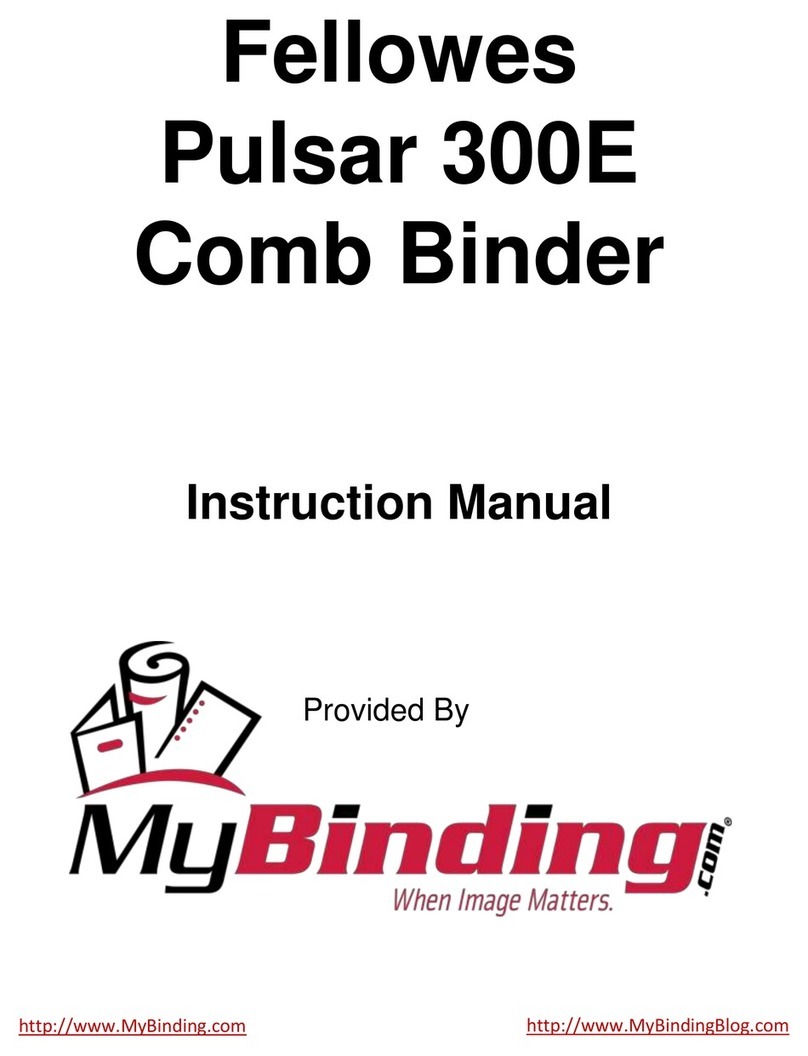
Fellowes
Fellowes Pulsar 300E instruction manual
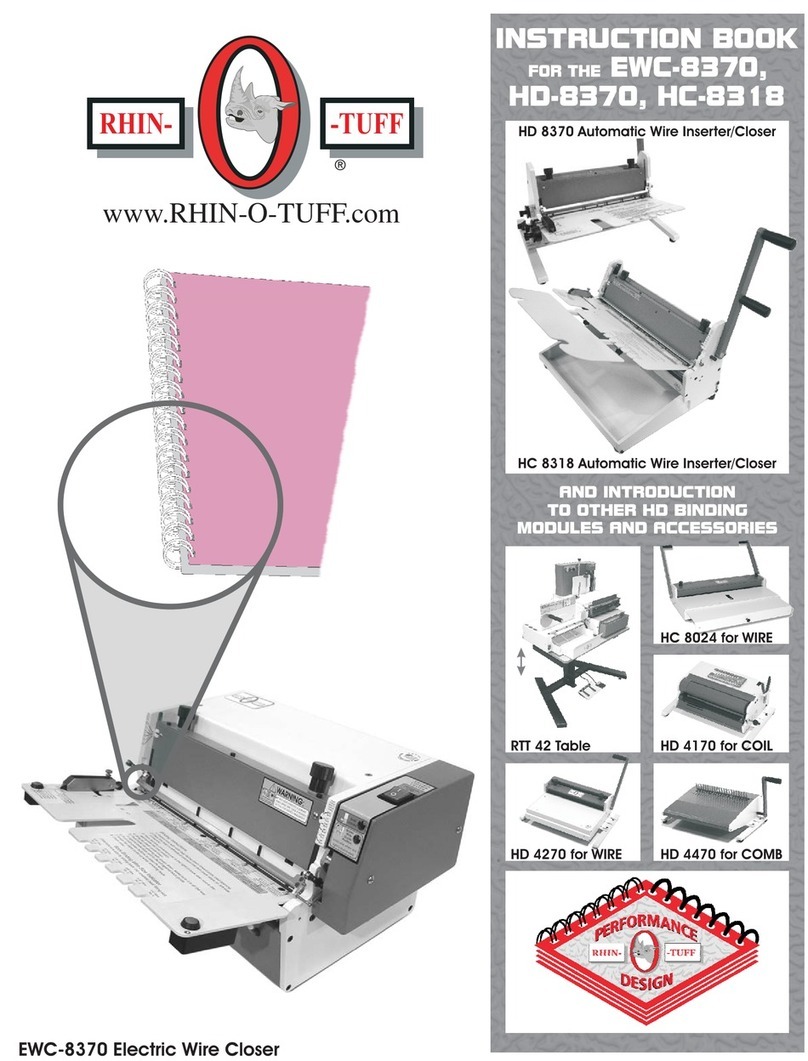
Rhin-O-Tuff
Rhin-O-Tuff EWC-8370 Instruction book

Rhin-O-Tuff
Rhin-O-Tuff APES-14 HD-6500 Operator's manual

Office Zone
Office Zone RHIN-O-TUFF OD 3500 Instruction book
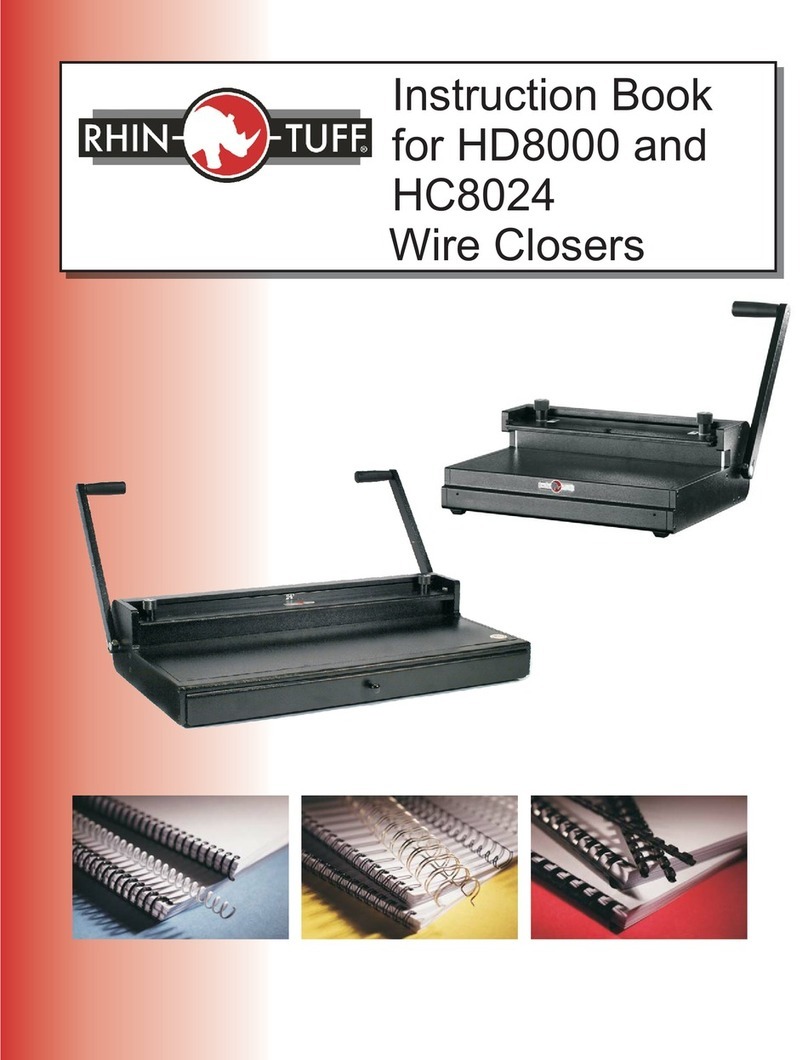
Rhin-O-Tuff
Rhin-O-Tuff HD8000 Instruction book
